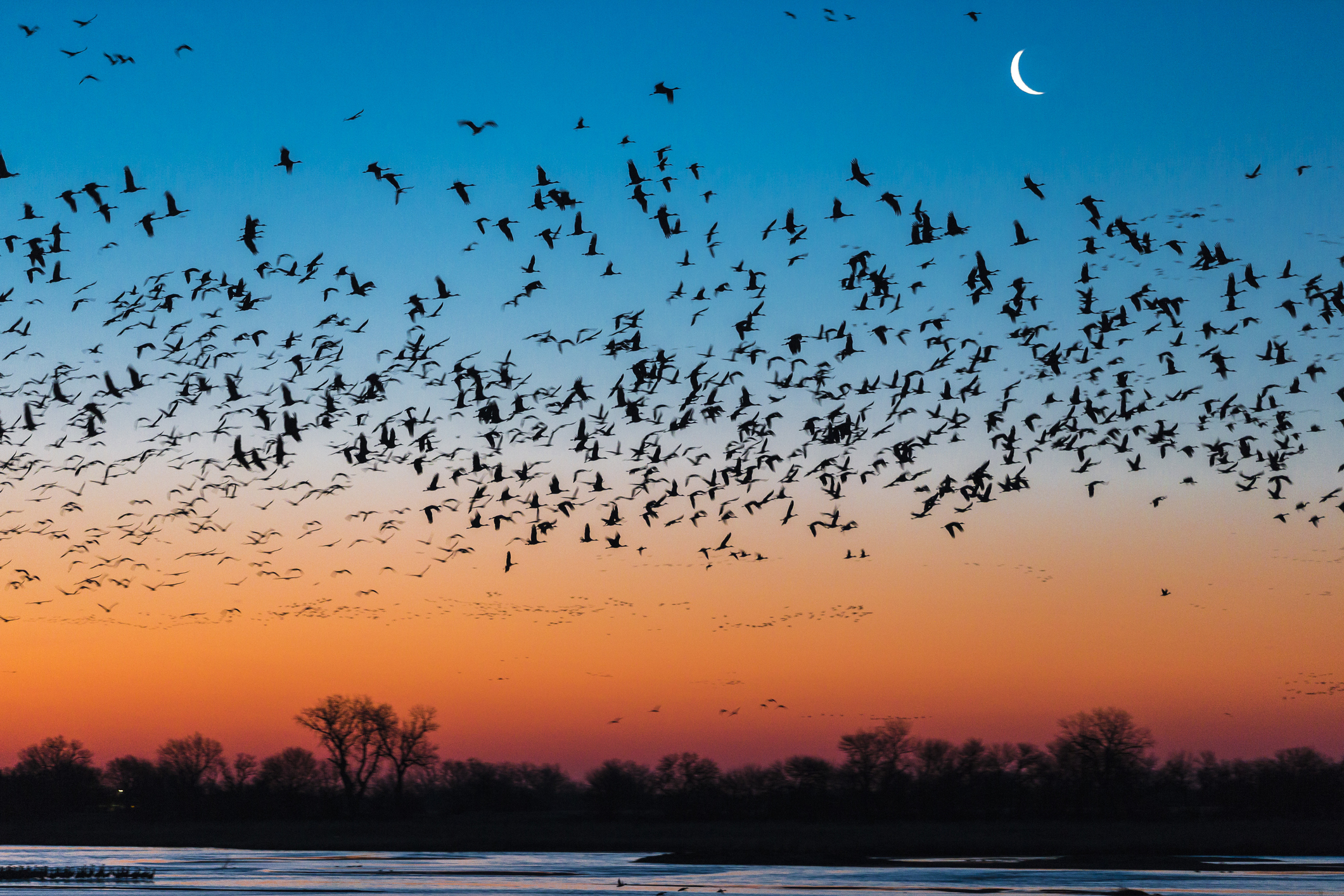
Migratory birds are almost a perfect metaphor for hope—so much so that Emily Dickinson’s line “hope is the thing with feathers” has become a cliché. Every year, just when we feel like the cold, gray months of winter may never end, migratory birds return from their wintering ranges to refill our fields and forests with color and song. In the darkest spring of my life, when I was facing a cancer diagnosis just as the world was shutting down due to COVID in 2020, birds were one of the things that kept me going. Noting the return of warblers, tanagers, and buntings that spring gave me something to focus on beyond my own troubles, a reminder that the bigger world was still continuing, still beautiful, even if my own immediate future felt uncertain.
But now more than ever, birds need our help. It’s our turn to be a source of hope for these wild creatures.
We are in the midst of a sixth mass extinction, and birds are part of it. A landmark study published in 2019 that drew on a wide range of data sources concluded that there are approximately 3 billion fewer birds living in North America today than there were in 1970—a staggering 29 percent decline. The volume of annual bird migration on our continent, as seen on the nationwide weather radar system, each year has dropped by 14% in just the last decade. The causes are many and include habitat loss as well as pesticide use, collisions with human-made structures, predation by outdoor cats, and, most of all, climate change.
When trying to take in the overwhelming challenges facing North America’s birds, it would be easy to lose hope entirely. Fortunately, an entire community of passionate scientists and conservationists has dedicated themselves to understanding, halting, and reversing these declines.
For the past century, ornithologists have harnessed nearly every new scientific leap forward to study bird migration. The development of radar during World War II led to new ways to gather large-scale data on migration patterns. The invention of the transistor and the launch of Sputnik in the decades that followed inspired the development of miniaturized tracking devices for following the movements of individual birds. Today, machine learning and high-volume genetic sequencing are among the techniques being used to examine migration in ever-finer detail.
It may be tempting to argue, in the face of such sobering population declines, that the time for data collection is over and we should be shifting all our resources to conservation, protecting crucial habitat and minimizing threats. But despite decades of work, the truth is we still don’t know enough about the migratory behavior of many bird species to target conservation efforts effectively.
One new concept to arise in wildlife science in recent years is that of “migratory connectivity”—the ways that populations of migratory birds (and other migratory species) link far-flung habitats across space and time as they complete their annual cycles of migration, breeding, and wintering. Even within a single bird species, populations that breed in different regions may also use different migratory routes and rely on different wintering areas.
Understanding migratory birds’ lives at this level of detail is crucial if we hope to turn the tide for these species. Habitat loss, pesticide use, or another threat at a single Central American “stopover” site that a species uses during migration, or a specific patch of South American forest that one population uses during the winter, could have cascading effects throughout a species’ range.
In the 1990s, for example, ornithologists realized that the western population of a beautiful raptor called the Swainson’s Hawk was dropping sharply. Unsure why, they fitted a few birds with satellite transmitters to see exactly where they went when they headed south in the fall. The hawks turned out to be spending the winter in a region of South America where a toxic pesticide called monocrotophos, used on sunflower fields, was killing them in large numbers. Pressure from conservation groups eventually led to a reduction in the use of this pesticide, and Swainson’s Hawk numbers began to recover.
It is possible to turn around declines in bird populations across broad groups of species; we know because we’ve done it before. Ducks and geese have increased their numbers by more than 50 percent since 1970, because their popularity as game species has led to large investments in protecting and restoring their habitats by governments and hunting organizations. Hawks and eagles have also increased, rebounding after the banning of the pesticide DDT, which decimated their populations.
To do the same for the birds that need our help now, we need more data and we need to make better use of that data. Experts on the ecology of migratory birds agree on the necessity to consolidate what we know about these species and get that information into the hands of policymakers and on-the-ground conservation practitioners, and to get better at working across international borders and incorporating partners from the social sciences and the perspectives of indigenous people.
In the past, I’ve compared migration research to a fractal—the closer we look, the more there is to see. The lives of migratory birds, the intricacies of their globe-spanning journeys, have fascinated generations of scientists and birdwatchers, bringing us many moments of joy and connection. Now is the time to take action to ensure that our descendants will get to enjoy the spectacle of migration, too.
More Must-Reads from TIME
- Inside Elon Musk’s War on Washington
- Meet the 2025 Women of the Year
- The Harsh Truth About Disability Inclusion
- Why Do More Young Adults Have Cancer?
- Colman Domingo Leads With Radical Love
- How to Get Better at Doing Things Alone
- Cecily Strong on Goober the Clown
- Column: The Rise of America’s Broligarchy
Contact us at letters@time.com